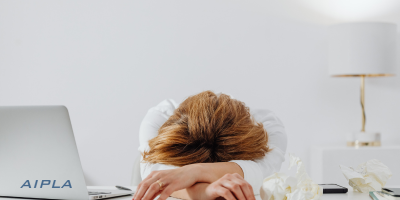Quarterly Journal 48-1
In This Section
The AIPLA Quarterly Journal, a publication of the American Intellectual Property Law Association, is housed at the George Washington University Law School and is edited and managed by an Editorial Board of intellectual property experts and a staff of law students under the direction of the Editor-in-Chief, Professor Joan Schaffner.
The Quarterly Journal is dedicated to presenting materials relating to intellectual property matters and is published four times per year. Editorial Board members (all of whom are lawyers) are selected based upon demonstrated interest and experience, and student staff members are selected from the students of the GWU Law School.
 QJ 48.1 - Rethinking the “Motivation to Combine” in Patent Law
QJ 48.1 - Rethinking the “Motivation to Combine” in Patent Law
Joshua L. Sohn
In determining whether a patent claim is invalid for obviousness, one of the most important inquiries is whether a skilled artisan would have been motivated to combine the prior art references that are alleged to invalidate the claim. The Federal Circuit has consistently held that this “motivation-to-combine” inquiry is a question of fact. However, this Article argues that the Federal Circuit is mistaken. Treating the motivation-to-combine inquiry as a question of fact violates Supreme Court precedent and eviscerates the settled rule that obviousness itself is a question of law. Moreover, treating the motivation-to-combine inquiry as a question of fact makes patent litigation more cumbersome and inefficient by impeding summary judgment on the obviousness defense. Thus, the Federal Circuit should discard its rule that the motivation-to-combine inquiry is a question of fact and should instead treat this inquiry as part of the ultimate obviousness determination—a question of law.
 QJ 48.1 - Hybridizing Immunized Testimony for Prior Art Disclosures in Cannabis Litigation
QJ 48.1 - Hybridizing Immunized Testimony for Prior Art Disclosures in Cannabis Litigation
Tim Dunker
The cannabis industry has grown tremendously over the last several decades and with many states legalizing (or at least decriminalizing) cannabis, the industry shows no signs of slowing down. As with any growing industry, the prospects for invention and acquisition of intellectual property rights are ripe. But what separates the cannabis industry from others is that cannabis is still illegal under federal law, making disclosure of public use or otherwise available to the public disclosures prohibitive. To ensure that both the public’s interest in protecting intellectual property rights is balanced with the government’s interest in enforcing the law, parties to cannabis patent litigations will need to petition the government for witness immunity for disclosures of non-tangible prior art during proceedings.
 QJ 48.1 - “Slower-Fashion”: Towards an International Copyright Framework for Fashion Design Protection
QJ 48.1 - “Slower-Fashion”: Towards an International Copyright Framework for Fashion Design Protection
Jingyi Li
Every season, fast-fashion retailers such as H&M, Boohoo, and Express offer inexpensive replicas based on original design works on the runway. Such blatant piracy can be perfectly legal. By exploiting the loopholes in the current structure and substance of American Copyright law, fast-fashion copyists have been accumulating billions in revenues. Emerging designers, on the other hand, are losing orders and risking having their entire careers erased. Fashion design piracy poses more than a local, copyright infringement problem — design piracy not only hurts young designers’ motivation to innovate, it also has catastrophic environmental impacts and poses risks for human rights violations in hazardous sweatshops located in developing nations.
This Note aims to analyze the landscape of U.S. copyright protection for fashion designs through examining procedural and substantive issues in district court cases that came after a landmark Supreme Court decision, to provide a comparison of high and low-IP protection paradigms, and to assert that an international cooperation paradigm against design piracy is warranted.
 QJ 48.1 - Determining the Article of Manufacture in Augmented Reality and Virtual Reality Design Patents
QJ 48.1 - Determining the Article of Manufacture in Augmented Reality and Virtual Reality Design Patents
Sonia Okolie
Augmented and virtual realities provide users with multisensory immersive experiences. As the technology involved in augmented and virtual realities continues to develop, so too does the likelihood of copying, given how lucrative and innovative this technology has proved itself to be. Design patents are an obvious choice for protecting the aesthetic appearance of these dynamic three-dimensional digital models. Design patent eligibility statute 35 U.S.C. § 171 protects the ornamental appearance of a design applied to an article of manufacture, without elaborating further on the scope of the term. A thorough analysis of the statutory and judicial constructions of the term article of manufacture, as well as the subsequent risks to finding patentability, yield the same conclusion: either congressional or judicial action must be taken to ensure proper protection for these designs. This Note proposes a two-part approach for addressing the article of manufacture for augmented and virtual reality design patents. The first step proposes that courts consistently construe the article of manufacture broadly, while the second step, in the alternative, proposes an amendment to the language of § 171 in an effort to ensure protection for augmented and virtual reality designs, by making deliberate statutory allowances for future technologies.
 QJ 48.1 - Trade Secrets and the GDPR: “Reasonable Efforts” of Cybersecurity and the Right for Trade Secrets to Be Forgotten
QJ 48.1 - Trade Secrets and the GDPR: “Reasonable Efforts” of Cybersecurity and the Right for Trade Secrets to Be Forgotten
Jeanel Sunga
For every trade secret, trade secret owners must demonstrate that “reasonable efforts” have been taken to protect the secrecy of the information. However, trade secret owners struggle to keep up with this requirement because of the new challenges presented by the increasing sophistication of technology in our modern age. Passwords must continuously be changed, social media must constantly be monitored, and software systems must always be updated and refined. The onus on trade secret owners to secure their confidential information has grown significantly with the continuing evolution of cyber threats and cyber intrusions. The federal government should step in to assist the private sector in securing their trade secret information by providing more guidance regarding adequate protective measures and safe harbors for relief.
The United States should look to Europe’s General Data Protection Regulation, which provides an excellent framework to help trade secret owners navigate the evolving demands of cyberspace. By providing general categories of necessary cybersecurity measures and a “right to be forgotten,” the General Data Protection Regulation will improve federal trade secret law in two ways. First, it will help the federal government establish a dynamic base line of cybersecurity measures to assist trade secret owners in focusing their cybersecurity efforts to ensure adequate trade secret protection. Second, it will provide an online takedown system for trade secrets that are leaked on the internet to minimize economic losses and preserve opportunities for legal relief. With these improvements to trade secret law, owners will better combat the new threats in this technological age.
Upcoming Events
-
 AIPLA CLE Webinar: Regulation, Risk & Resilience: The Nexus Between Professional Liability, Duty of Competence & Practitioner Well-Being
AIPLA CLE Webinar: Regulation, Risk & Resilience: The Nexus Between Professional Liability, Duty of Competence & Practitioner Well-Being
February 10, 2026 12:30 PM to 2:00 PM | Eligible for up to 90 Mins CLE
Mental health issues and substance use disorders can affect any practitioner, in any setting, and at any time. Left untreated, they can destroy careers and lives. This program will discuss where the legal profession currently stands in relation to the substantial challenges presented by untreated mental health issues and substance use disorders and examine the nexus between ethical competence under the USPTO Rules of Professional Conduct and practitioner well-being. This program will educate attendees on how to recognize the signs of an impaired attorney, how to approach the colleague and begin a conversation, and discuss the possible disciplinary and professional liability implications of an impaired practitioner’s conduct. In addition, the speakers will present best practices/effective risk management strategies, preventative measures, and proposed policy and well-being initiatives, that practitioners in any practice setting may implement to protect clients, themselves, and other firm members as well as save careers. -
.png?sfvrsn=fb5905da_1) 2026 IP Transactions Bootcamp
2026 IP Transactions Bootcamp
February 12, 2026
This in-person bootcamp is designed to provide practical insights and strategies for professionals working in intellectual property transactions. The day features a comprehensive agenda including: Panels and CLE Sessions: Learn about Working with Tech Transfer Offices, Strategies for successful collaborations between nonprofits and industry, and Protecting and monetizing an AI asset. Drafting and Negotiating Tips: Get practical advice on drafting and negotiating strategic collaboration and license agreements. Hands-on Workshop: Participate in a Mock licensing negotiation to put your skills to the test. Networking: Conclude the day with a dedicated Networking reception. -
.png?sfvrsn=48c235e_1) 2026 Patent Prosecution Bootcamp - Arlington, VA
2026 Patent Prosecution Bootcamp - Arlington, VA
March 4 to 6, 2026 | Up to 1235 minutes, including 60 Ethics minutes
The 2026 Patent Prosecution Bootcamp is a comprehensive, CLE-accredited seminar that includes instructional lecture-style sessions with practical tips on U.S. and international patent preparation and prosecution, as well as hands-on interactive workshops that will walk you through drafting claims and responding to office actions. -
2025 Women in IP Global Networking Event
April 16, 2026
-
2026 Spring Meeting - San Francisco, CA
May 13 to 15, 2026
We’re excited to welcome you to the 2026 AIPLA Spring Meeting, where innovation, technology, and intellectual property come together to shape the future. San Francisco is ready for your ideas, energy, and passion for IP!

